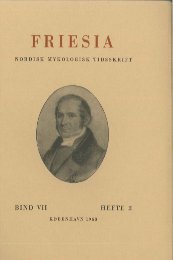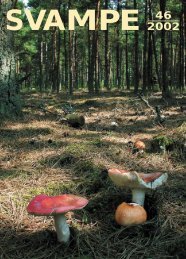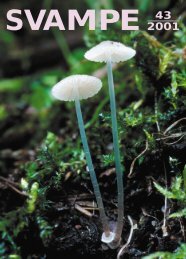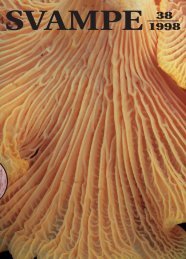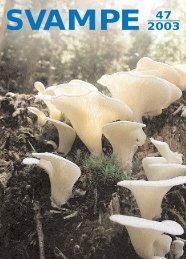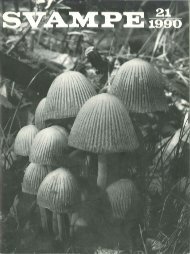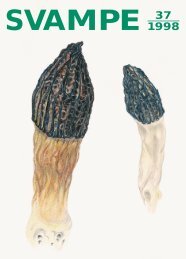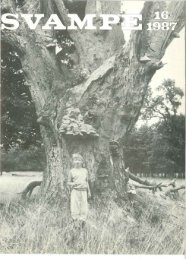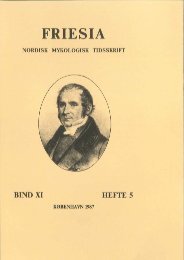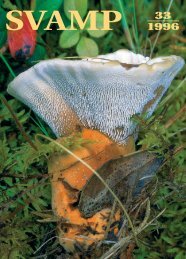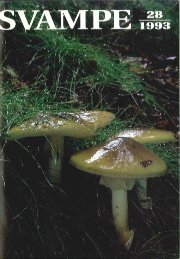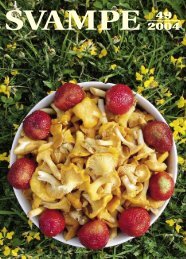Friesia X, 4-5
Friesia X, 4-5
Friesia X, 4-5
You also want an ePaper? Increase the reach of your titles
YUMPU automatically turns print PDFs into web optimized ePapers that Google loves.
Anthracobia macrocuetis,<br />
A. maurilabr a,<br />
A. melaloma,<br />
Aseobolue carbonaruss,<br />
Coprinus angulatus)<br />
Geopyxis carbonaria,<br />
Humaria hemisphaeriouies,<br />
Peziza anihrac ina,<br />
279 -<br />
P. echinospora,<br />
P. praetervisa,<br />
P. traciwcarpa,<br />
Pholiota carbonarui,<br />
Pyronema oniphalodes,<br />
Sphaerosporella hinmulea,<br />
Tephrocybe carbonaria,<br />
Tricharina gilva.<br />
All these species occur in temperate areas (cp. e. g. EBERT (1958),<br />
MOSER (1949) P. MILAN PETERSEN (1970 , 1971), PIRK (1950», but<br />
only a few have previously been recorded from aretic or alpine<br />
areas. M. L AN GE (195 5, 1957) reported Coprinus angulatus) Pholiota<br />
carbonarui, and Tephrocybe carbo naria from West Greenland. All the<br />
other species mentioned above have not previously been recorded<br />
from Gr eenland.<br />
The role of fire as an ecological factor in natural ar etic vegetation<br />
is insignificant. In all the areas investigated, burning was a<br />
result of the a ctivit y of man. In this respect, the occurrence of at<br />
least 16 sp ecies of obligate fireplace fungi may at first seem sur <br />
prising, compared with the 33 species found in Denmark as aresult<br />
of extensive investigation of much more varied localities (P. MILAN<br />
PETERSEN 1970, 1971). It is, however, possible that the vegetative<br />
state of these species are common elements in the soil microflora of<br />
undisturbed aretic heath and scrub. The investigations in Denmark<br />
have shown that all the species mentioned, with the exception of<br />
Sphaerosporella hinnulea, are able to form fruit bodies within two to<br />
four months after burning ; this is an ability which makes them well<br />
fitted to the short summers of the Arctic.<br />
The relationship between the appearance of the individual species<br />
and the time since burning eannot be determined on the basis of the<br />
present material alone. However, in all those cases where the age of<br />
the picnic hearths and burnt areas has been established, the observations<br />
agree with those made in Denmark.<br />
Though only cursorily studied, the edaphic conditions in the burnt<br />
areas closely parallel the Danish observations. The pH-values for<br />
the scorehed humus and the ash in the hollows in the burnt area at<br />
Holsteinsborg largely correspond with those found in similar situations<br />
after a forest fire in a Danish coniferous plantation. It is clear



